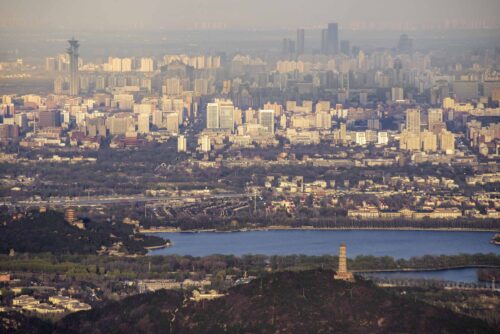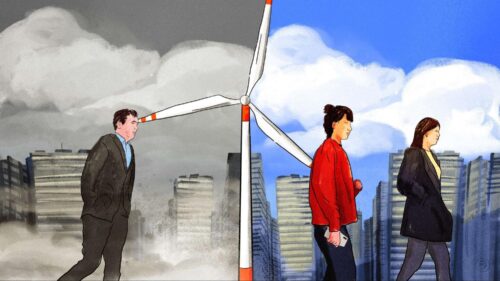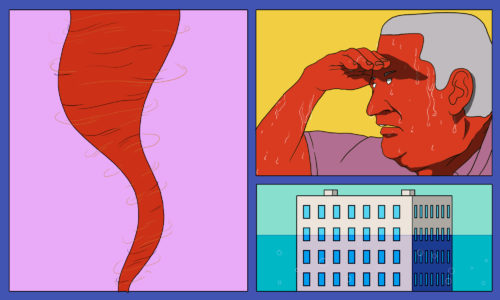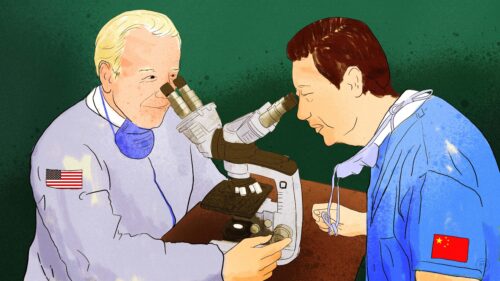China is providing the world a roadmap to an electrified future
Clean and affordable private transportation is the element missing from so many urban plans for more climate-friendly living. With its rail system, public transportation, and abundance of electric two-wheelers, China is offering the developing world a model for transitioning into clean energy.

I just returned from three months in China. While daily life was pretty much consumed by the endless variations and complexities involved in the practical aspects of the end of COVID zero, my actual reason for being there was to work on climate change policy. What struck me most from going out and about when I could was that no one in either China or the rest of the world was talking about what has to be the most remarkable change in China’s climate mitigation approach, and the one with the most to offer to the rest of the world: the electrification of transportation. As I traveled between Shanghai and Beijing, and then around the city, electrified transportation was simply everywhere, and yet, almost never commented on.
It has become widely understood, especially in light of the passage of the U.S.’s Inflation Reduction Act (IRA, a climate bill with an unrelated title), that the key to a zero-carbon future is electrifying everything we use energy for — our homes, our vehicles, as well as industry, agriculture, and the productive side of the economy. The U.S.’s IRA is very much focused on electrification, with huge subsidies for replacing gas and oil in homes and businesses as well as in purchasing electric vehicles (EVs).
However, when we talk about transportation in the U.S., we tend to mean simply automobiles, or we jump immediately to the technically more difficult question of how to electrify heavier vehicles (trucks) or to replace jet fuel. That misses an entirely different approach to electrification — one where China is demonstrating the path. Sure, the Chinese government has promoted the production and sale of electric automobiles, but that is a small part of the true electric transportation network that China is building.
There are four major prongs to China’s true electrified transportation picture:
1. Electrified rail. By 2021 China’s rail system was over 70% electrified, up from 50% a decade ago. This includes electrification of the main routes of China’s high-speed rail. Just think about the Beijing-Shanghai rail line, one that I have traveled frequently. At four and a half hours city-to-city it is a convenient way to avoid the headaches of air travel. As a result, while train emissions often get compared to auto emissions, a better way to think about this line is that for every train with its approximately 1,500 passengers leaving every 10 minutes during the day, we have five airplanes averted. This is a huge savings on the intercity transportation front. And as China uses more renewable and nuclear energy in its electricity mix, this savings grows.
2. China keeps building subway systems. They are now up to 45 (45!), and that’s up from only four in the year 2000. Subways are electrified urban transportation. They are the most efficient way to move people around a city, and as the linked article argues, the Chinese have made building this transportation even more efficient, by standardizing it and building at scale.
Moreover, the growth of the rental bicycle market as well as the ease of getting a taxi (often electric) on a mobile app means that the “last mile” problem has been substantially reduced. One criticism of China’s subway systems is that they often have the stops a bit too far apart for pedestrian comfort (though Shanghai is a contrary example). Generally, transportation planners find that commuters are willing to walk between a quarter- and a half-mile to a rail station (less for bus stops), and that number seems to be the same for Chinese subway riders. Thus, providing convenient options for getting to and from subways, as well as limiting driving access to the city and making it more costly (mostly through parking fees), have all made subways an excellent and expanding option for urban Chinese residents.
3. Electric two-wheelers! This is the core of the Chinese solution to urban transportation and the part most often missed by both Chinese and foreign commentators. As of 2021, there were more than 300 million electric two-wheelers on the streets, and the number grows every year. Just to put this in perspective, there are 1 million electric two-wheelers in India, a country with an active program to encourage them — something the Chinese government has never really done.
The growth of Chinese electric two-wheelers has been much more about the stick than the carrot — most cities in China did not allow for the growth of the most common form of developing country transport — two-stroke engine two-wheelers, which are both a source of greenhouse gases and of urban air pollution. The result is that as Chinese consumers wanted to leave their pedal bicycles behind, they naturally gravitated to electric two-wheelers. Not only that, even people who own cars often choose to use an electric two-wheeler to avoid traffic jams. While pedal bikes are great for exercise, an electric two-wheeler accommodates many more ages and fitness levels, and also suits an increasingly white-collar workforce that doesn’t want to show up at the office drenched in sweat.
4. Electric delivery vehicles. While diesel trucks still dominate intercity goods transit, within cities the more common sight is what might be called micro-trucks, carrying goods both for China’s extremely active online order business and to supply retailers. These vehicles both reduce urban air pollution and the carbon footprint of the larger long-haul truckers by keeping the big diesel-belching vehicles out of the city and away from less efficient stop-start urban traffic patterns.
To be sure, China does not currently have a zero-carbon, or even low-carbon, transportation network. It can’t as long as much of its electricity is powered by coal. But what it does show us is a very different roadmap to that needed zero-carbon future than what is being laid out in Europe or the U.S. While everyone knows that heavier vehicles require more expensive batteries and electricity, the U.S. and even the European model is to take the personal vehicle as a given — at whatever size up to and including SUVs — and electrify it. But Chinese urban policy has made driving private automobiles more difficult. There are limitations on non-local license plates entering cities, which days locals can drive, and much stricter enforcement of parking rules, making urban parking much more expensive than it was a decade ago. Instead, there are more lightweight driving options as citizens choose electric two-wheelers and goods are moved by micro-electric trucks. Even the elderly now scoot around their neighborhoods in enclosed bubble-like electric three-wheelers.
China is offering an alternative model that could be much more suited to the developing world. In cities from Hanoi to New Delhi to Nairobi, much of the population does not rely on formal urban mass transit of the type that is so enviable in Tokyo or Hong Kong. Instead, two-wheelers, three-wheelers, and various types of micro-buses are a major part of the transit system. But they are presently fueled by petrol, often with dirty two-stroke engines. Few countries have the financial wherewithal for the kind of subway expansion seen in China, but what the Chinese model shows us is even if they did, their publics will still want a clean and affordable private transportation option. Electrified two-wheelers are going to be essential to the global clean energy transition.
How do we expand electric two-wheelers successfully beyond China? The key is a stable supply of electricity. As long as developing countries face shortages that result in scheduled (or surprise) blackouts (often called load-shedding), consumers are not going to find electric vehicles a dependable form of transportation. Thus, expanding the electricity supply is a critical prerequisite to green transportation. This is a discussion where China, with its rapidly expanding non-carbon electricity and novel approach to urban transportation, has a real opportunity to offer its unique experience.






